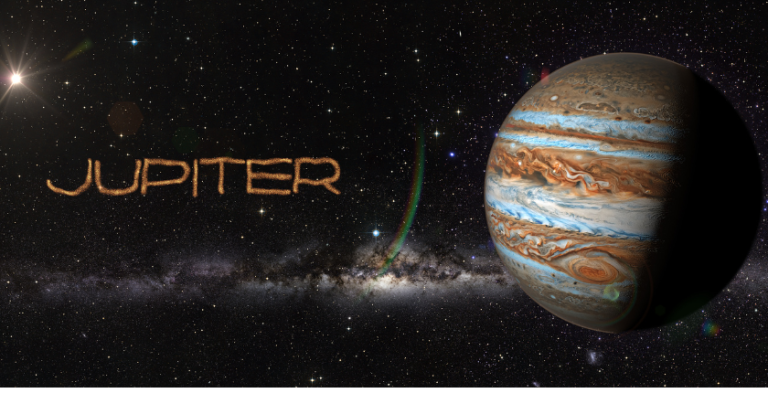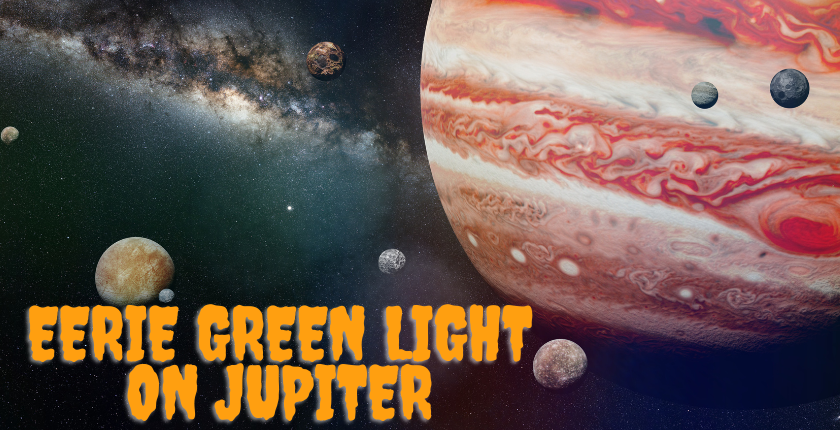Eerie Green Light on Jupiter: A Clue to Alien Existence?
Table of Contents
Uncover the mystery of the Eerie Green Light on Jupiter, exploring its cosmic implications and the quest for extraterrestrial life. Dive into the celestial enigma in this captivating article.
In the vast expanse of our solar system, Jupiter has always been a subject of fascination for astronomers and space enthusiasts alike. Beyond its immense size and swirling storms, recent observations have unveiled a mysterious phenomenon – an eerie green light that has left scientists intrigued and pondering the possibility of extraterrestrial existence. This article delves into the enigma of the eerie green light on Jupiter and its potential significance in the search for alien life.
Eerie Green Light on Jupiter
The eerie green light on Jupiter is a captivating atmospheric phenomenon known as auroras. Similar to Earth’s northern and southern lights, Jupiter’s auroras are produced by charged particles, such as electrons, colliding with gases in the planet’s magnetic field. These collisions result in the emission of light, with the distinctive green hue often associated with the presence of oxygen. NASA’s Juno spacecraft has provided valuable insights into these mesmerizing light displays, unraveling the mysteries of Jupiter’s dynamic and complex magnetosphere.
Unveiling the Mystery
The Spectacular Discovery
Astronomers, armed with state-of-the-art telescopes and sophisticated imaging tools, achieved a groundbreaking revelation as they documented the captivating phenomenon of a green luminosity on Jupiter. This unexpected event has ignited a surge of enthusiasm within the scientific community, instigating a more in-depth scrutiny of its roots and potential significance.
Decoding the Green Glow
The distinctive green hue emanating from Jupiter is believed to be linked to the interaction between the planet’s atmosphere and charged particles from the surrounding space. As sunlight penetrates Jupiter’s atmosphere, it triggers a reaction with various compounds, producing this unusual luminosity. Scientists are now diligently analyzing the composition of the green glow to unravel the specific elements responsible for its manifestation.
Read also: African Home Decor

Extraterrestrial Implications
A Cosmic Connection
The tantalizing prospect of extraterrestrial life has long fueled the exploration of our celestial neighbors. The presence of an unexpected green light on Jupiter raises questions about the potential involvement of alien activity. Could this luminous display be a deliberate signal or an unintended consequence of advanced extraterrestrial technologies?
The Search for Alien Existence
Scientists are carefully examining the data, considering the possibility that the green light is a beacon from intelligent life forms residing beyond our planet. While skepticism prevails, the scientific community acknowledges the need for an open-minded approach to exploring the vast unknowns of the cosmos.
The Importance of Jupiter in Astrobiology
Jupiter as a Cosmic Laboratory
Beyond its aesthetic allure, Jupiter serves as a crucial celestial laboratory for astrobiologists. The planet’s unique atmospheric conditions, coupled with its immense gravitational influence, create an environment that may harbor clues to the origins of life in our solar system and potentially beyond.
Probing the Depths
Ongoing missions, such as NASA’s Juno spacecraft, are diligently studying Jupiter’s composition, magnetic fields, and atmospheric dynamics. These endeavors aim to unravel the mysteries concealed within the gas giant, providing valuable insights into the broader question of life’s existence in the universe.
The Future of Space Exploration
Advancements in Technology
As technology continues to advance, so does our ability to explore and understand the cosmos. Telescopes, space probes, and scientific instruments are evolving at an unprecedented pace, enabling researchers to delve deeper into the mysteries of celestial bodies like Jupiter.
Collaborative Efforts
International collaborations among space agencies and scientific institutions play a pivotal role in expanding our knowledge of the universe. The collective expertise and resources pooled from around the world enhance our capacity to undertake ambitious space exploration missions and interpret their findings.
What is the bright green light on Jupiter?
The bright green light observed on Jupiter is often attributed to the planet’s auroras. Similar to Earth’s auroras, Jupiter’s version is caused by charged particles interacting with the planet’s magnetic field and atmosphere. In Jupiter’s case, these particles are primarily from its volcanic moon, Io. The intense magnetic forces generate colorful light displays near the planet’s poles, with green being a prominent hue. This celestial phenomenon showcases the dynamic interplay between Jupiter’s magnetic environment and the surrounding moons, providing a fascinating glimpse into the planet’s complex and dynamic nature.
Final Words
The eerie green light on Jupiter stands as a captivating enigma, inviting humanity to contemplate the vastness of space and the potential for extraterrestrial life. While the scientific community diligently pursues answers, the mysteries of the cosmos persist, urging us to continue exploring, questioning, and reaching for the stars.
People Usually Ask
What is the significance of the eerie green light on Jupiter?
The green light on Jupiter is a mysterious phenomenon observed in its atmosphere. Scientists believe it may be linked to the interaction between sunlight and charged particles, prompting further investigation into its origin and implications.
Could the green light on Jupiter be a sign of extraterrestrial life?
While the possibility is intriguing, scientists are currently exploring natural explanations for the green glow. The search for extraterrestrial life remains speculative, and the green light’s origins are being studied within the context of known astrophysical processes.
What missions are actively studying Jupiter?
NASA’s Juno spacecraft is a key player in studying Jupiter, focusing on its composition, magnetic fields, and atmospheric dynamics. Ongoing and future missions aim to deepen our understanding of the gas giant and its potential role in astrobiology.

